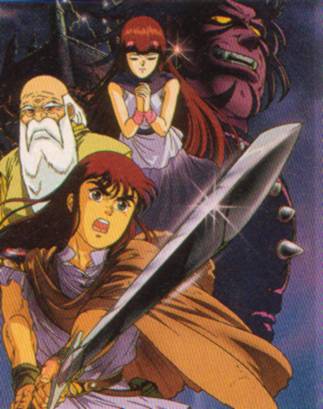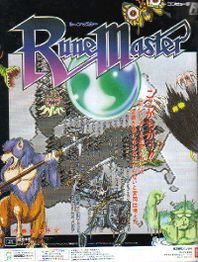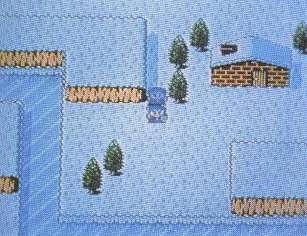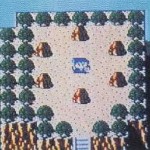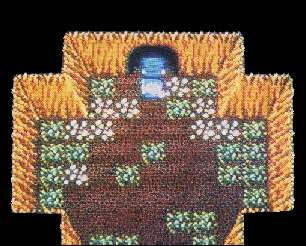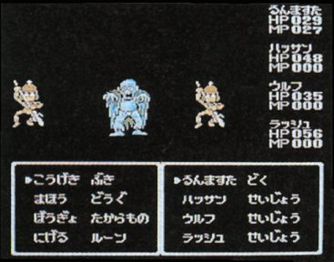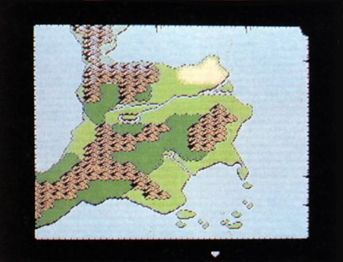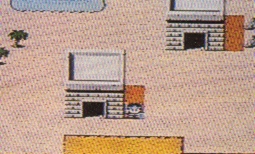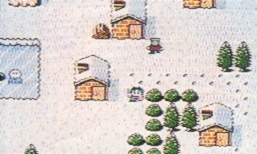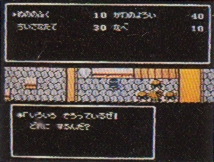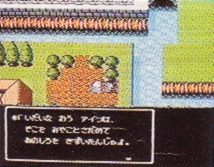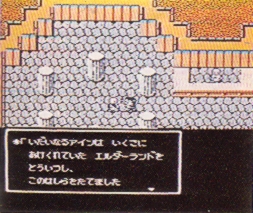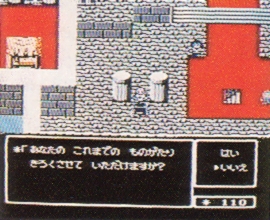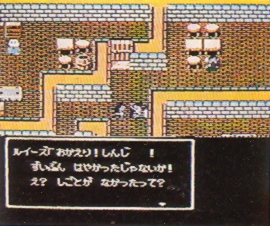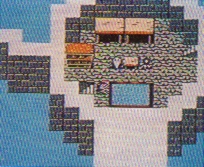Rune Master (lost build of unreleased Famicom role-playing game; 1988-1991)
Rune Master was a role-playing video planned to be published by Bandai for the Nintendo Family Computer, also known as the Famicom. Hiroshi Miyaoka would be creating the game, with Yuji Horii supervising, both of them being known for working on the Dragon Quest series. Despite receiving much praise from pre-release material, the game was cancelled and was never released to the public.
Story
The game takes place in a magical country called “Elderland.” The protagonist was a commoner who cannot pay rent, yet tries to make money to help his sick sister, Mimi. They lived in his apartment in the commercial area of town. He would go on a quest to collect the six runes of Elderland to help pay for her medical expenses and would use warp tunnels called "rune gates" to travel around.[1][2]
Gameplay
As no playable version of Rune Master was ever released to the public, only written information about how the game was played is available. In the nineteenth issue of Weekly Shonen Jump, it was said that Rune Master would not have experience points and that the player would hunt monsters.[1]
The battle system seemed to be very similar to that of other role-playing games released around the time of development, such as Dragon Quest.
Non-player characters in town would change their dialogue depending on the progress the player had made, which implies that the game had some degree of nonlinearity.[2]
Development
Rune Master began with the development of the 1986 role-playing video game Dragon Quest.
Hiroshi Miyaoka had worked with Yuji Horii on the Dragon Quest series until Dragon Quest III. During development of those games, Miyaoka often had differing opinions on aspects of the game. He talked about such differences in an interview:
For example, for a dungeon, I said, "Since it's an underground labyrinth, shouldn't it be made so that you'd get lost?"
Then Horii-san said, "No, if we make it like that, then players wouldn't be able to solve it."
And because I was young at the time, I said "That's weird! There can't be an easy-to-solve dungeon!" There were various small quarrels like that.[3]
Many of Miyaoka's suggestions would get rejected by Horii. Eventually, he felt as though they had very different directions they wanted to go in, particularly during the development of Dragon Quest III. Horii suggested that Miyaoka should make a game that he wanted to make.
Around that time, Bandai requested Miyaoka to make his own role-playing game, with Shinji Hashimoto as the producer. Horii would be supervising the development of the game. Miyaoka agreed. This game would be Rune Master. This was likely in 1988, the same year Dragon Quest III was released and when Miyaoka started up his own video game development company, Crea-Tech. Satoshi Kadokura would be composing the game's music, with Hiroshi Oginome working on the character design.[1][2][4]
Horii was of great help to Miyaoka. As Miyaoka had not made his own role-playing game before, he taught him how to draw maps and create dialogue flow charts for shops.[3]
The game development began, and the first notice of Rune Master was published in Weekly Shonen Jump in the nineteenth issue released in April 1990. It gained attention for being an original role-playing game rather than a licensed character game, which there had been many of at the time. The visuals were also praised.[1][2]
The game would make appearances in the twenty-fifth issue of Famicom Tsuushin (now Famitsu) in May 1990 and the fiftieth issue of Weekly Shonen Jump in November 1990. In that Weekly Shonen Jump, it was said that Rune Master was nearing completion, and was given a tentative release date of spring 1991.[1]
The game was supposed to appear in Weekly Shonen Jump in December, but that never happened. It appeared in Famicom Tsuushin that month instead. The game would not appear in another magazine until the July 1991 issue of Famicom Tsuushin, in which the release of the game was announced to be postponed to fall of that year.[1] However, the game was never released, and would not appear in another magazine.
The game was cancelled, with Miyaoka stating that he could not complete it, and he began to doubt his abilities as a game designer. However, he had a second chance with Metal Max, which started development after Rune Master was cancelled. Metal Max was released in May 1991, around the time that Rune Master was supposed to initially release.
It is unknown when Rune Master's development was cancelled, as well as why Metal Max was released so soon after Rune Master was advertised, since Metal Max was approved only after the former was considered a failure.[1][3][4] Rune Master was given a postponed release date even after Metal Max was released, which means that it is possible that development had resumed at some point, only to be cancelled again.
Availability
This game was never publicly playable. The game was said to be nearing completion in November 1990, yet Miyaoka has stated that it was never finished.[3] Many screenshots were shown in magazines, as well as character artwork. It is very likely that an incomplete yet playable version of this game exists, considering how far in development it was advertised to be.
Gallery
References
- ↑ 1.0 1.1 1.2 1.3 1.4 1.5 1.6 Phantom Famicom Game Rune Master's Chronology Contradiction. Retrieved 28 Aug '21
- ↑ 2.0 2.1 2.2 2.3 Famicom Research Club Article on Rune Master. Retrieved 28 Aug '21
- ↑ 3.0 3.1 3.2 3.3 2018 Interview With Hiroshi Miyaoka. Retrieved 26 Aug '21
- ↑ 4.0 4.1 Inside Games Article on Metal Max. Retrieved 28 Aug '21
